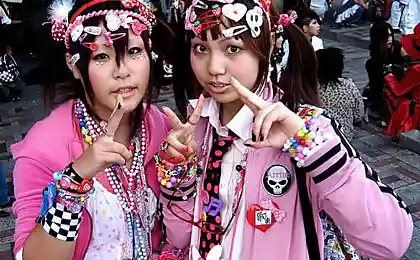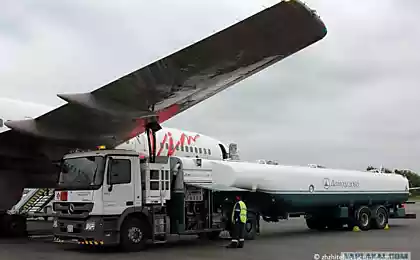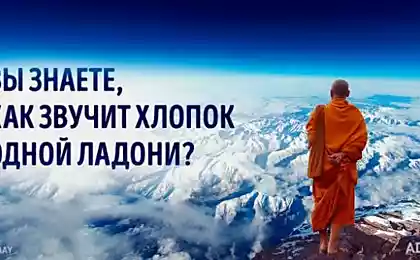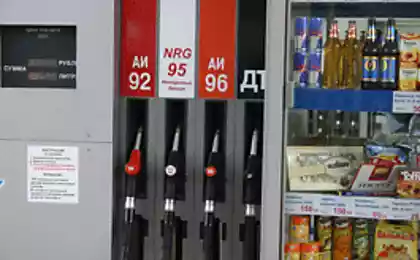643
The Japanese are preparing to "fill" the planes of jeans. How much money will it fly?
The economy increasingly have to adapt to the environment. The airline business is no exception. Particularly he gets from the European Union, which have already entered for their company quota system emissions aircraft, and the money promises to put on the development of environmental projects. To please the same conditions of operation of foreign carriers has threatened the EU in 2020. Waiting x hours company start take a closer look at developing sector of biofuel innovation. In Russia clean fuel want to make sawdust, and in Japan — from old jeans and t-shirts. The idea is to reduce the number of emissions of harmful carbon dioxide (chemical formula CO2) is forcing air carriers to use the most original ways of producing biofuels. Such fuel is called the types that are obtained from vegetable or animal raw materials from waste products of organisms or organic industrial waste.
It became known that the Japanese startup Jeplan in cooperation with the airline giant Japan Airlines (the second player on the market of the Country of the rising sun after Nippon Airlines) works with retailers, which collects old clothes collection from stores nationwide. The company's founder — Michiko Iwamoto — set a goal to produce biofuels for civil aircraft. So he wants to make a contribution to the fight against harm to the ecology of modern aviation. By the way, the proportion of aircraft in the global "pie" of emission is about 2%.
Entrepreneur who founded Jeplan in 2007, spent five years developing the methods of production of bioethanol from old t-shirts and jeans. A technology that uses fermentation to turn the sugar contained in the cotton in alcohol, was first presented in October 2015. Then a tour of the shopping malls in the country Iwamoto took the analogue used in the filming of the movie "Back to the future" DeLorean car.
— I believe that in the future will create a car that will go to the trash, the businessman said, Recalling the car, running on waste from "Back to the future — 2".
Recall that the supercar in the film operates from a portable reactor that generates electricity by processing garbage.
— Years passed, but this did not happen, so I thought it would be necessary to develop this idea, — said Iwamoto.

Jeplan will build a pilot fuel plant in Japan and will test the aircraft using a mixed fuel in 2020. Another 10 years should receive a commercial plant for the production of biofuels. Made from cotton things fuel, of course, is not the best insurance, from beginners to revive oil prices. Experts estimate that 100 tons of cotton products give approximately 2641 gallon of fuel (about 10 litres). A Boeing 747 uses 1 gallon of fuel per second.
Even if every cotton thing from Japan will be used in the production of biofuels, it will give only 70 thousand liters of fuel per year — less than 1% used Japanese carriers, experts say. But progress does not stand still. Can begin to use different types of waste and materials, including paper. Cotton clothing may just be the beginning of a long journey.
Visit the Japan Airlines website notes that in January 2009, the plane of the airline, Boeing 747-300, made its first demonstration flight (without passengers) around Tokyo on biofuel. With one of its four engines worked on a mixture of conventional and biofuels (bioethanol from Ryzhikov, milkweed and duckweed). The pilots then noted that the third engine was functioning normally and his work indistinguishable from the work of the other three engines operating on jet fuel.
In 2012 Japan Airlines has promised that he will cooperate with organizations and government on creation of biofuels. The carrier has set the goal to reduce their carbon dioxide emissions to the atmosphere by 23% by 2020 compared to 2005.
Why is all this done?Jeans, t-shirts, sweaters and even pants are going to biofuels for a reason and not for fun. It's all in the business. To be exact, in a restrictive manner, protecting the environment measures taken by the governments of a growing number of countries. For example, the EU originally included the air national quota trading system for greenhouse gases (ETS) from 1 January 2012. Airlines flying to the EU, had to buy quotas on the European stock exchange, and the money was planned to extend the fight against the greenhouse effect.
In 2012, Deputy transport Minister Valery Okulov has not excluded that from-for eurotrashboy to the Russian air carriers on payment of the fee for CO2 emissions in Russia will produce biofuel from sawdust: "Russia — forest country, we have enough sawdust, why not produce them". In the Russian aviation industry was talking about the trials with the EU on this issue or on countermeasures on European airlines.

Later, however, the EU postponed the distribution system on non-EU airlines on January 1, 2014. And in October the European Commission is under pressure from the International civil aviation organization (ICAO) adopted the decision to recommend European Parliament to postpone the introduction of fees for non-European airlines for carbon emissions over the territory of Europe 2020. To this point promises the ICAO to develop a global market mechanism to address emissions of greenhouse gases in civil aviation.
According to the Director of consulting company "Infomost" Boris Rybak, promoted by the European Union the system is not very honest against foreign market players.
— We have greatly reduced the volume of international traffic. On the proposed regulations, many domestic airlines are simply not included in the category of taxpayers of this collection: they have very small traffic volumes. The importance of the postponement of that proposed activities are incorrect from the point of view of international air law. EU imposes duties, which, to put it mildly, not very legitimate. This fees, not from the flight, and not with emissions over the territory of the EU, and for the entire route. If the plane flies from Paris to Tokyo, then pay for emissions on the whole route — but not Russia over which the plane flies 80% of the distance and time, and myself. EU imposes payment unilaterally. Americans, China, Russia were opposed to this system, so it was postponed, — said Boris Rybak.
Experts: pro and сontraInterviewed experts on-to a miscellaneous estimate prospects of use of biofuels in aviation.
— Flying on biofuel in a test mode has already been executed. But then the topic somehow died. Probably not so smooth. Drive fuel can out of anything. The only question is its quality, in the composition of the impurities. It is clear that in a diesel engine will burn and fish oil. But in the aviation industry to clean fuel special requirements. That is all the fuel out of clothes? There are contaminants and whether they will precipitate during prolonged storage and temperature changes with an amplitude of 100 degrees? To answer these questions, you need to take a long extensive testing. And preferably not on the passengers, — said the chief editor of industry portal Avia.ru Roman Gusarov.
In his opinion, to mix biofuel with traditional fuel for airplanes is dangerous.
On the website of the Geneva Association of the airline industry Air Transport Action Group (ATAG; among the founders of the organization — manufacturers of aircraft and engines Airbus, Boeing, Bombardier, Embraer, GE Aviation, Pratt & Whitney, Rolls-Royce, etc.) lists all the flights, which in 2011 performed with the use of biofuels.
Already, CO2 emissions have been reduced by 50% for one adult compared to 1990, experts say ATAG. By 2050, the organization seeks to reduce emissions of the aviation industry by 50% compared to 2020. The head of the Russian biofuel Association Alexey Ablaev I am sure that over time, the theme of biofuels in aviation will cease to be a sort of science fiction, although he admits that the current message from the Japanese more like a PR stunt.

Old cotton clothing — jeans and t-shirts is primarily cellulose. That's what are working on now. It is pure cellulose, make this material the biofuels effort is, it's easier than making fuel from straw and sawdust, — said Alexei Ablayev.
However, he expressed doubt that Japan will find cotton garments for biofuel production in the quantities necessary for the requirements of aviation. In his opinion, the development of biofuels in the first place is because in the world there is a surplus of agricultural products. It is a way to remove the excess of grain, corn, etc. the Second growth driver is to combat climate warming and emissions of greenhouse gases (CO2).
Now biofuels are of course more expensive than jet fuel, several times. But 100 years ago, gasoline people also bought in pharmacies as a medicine, and it was very expensive, however, with the development of market and consumption prices were reasonable, the expert added. published
Source: life.ru/t/%D0%B1%D0%B8%D0%B7%D0%BD%D0%B5%D1%81/945577/iapontsy_ghotoviatsia_zapravliat_samolioty_dzhinsami_skolko_dieniegh_na_eto_ulietit
It became known that the Japanese startup Jeplan in cooperation with the airline giant Japan Airlines (the second player on the market of the Country of the rising sun after Nippon Airlines) works with retailers, which collects old clothes collection from stores nationwide. The company's founder — Michiko Iwamoto — set a goal to produce biofuels for civil aircraft. So he wants to make a contribution to the fight against harm to the ecology of modern aviation. By the way, the proportion of aircraft in the global "pie" of emission is about 2%.
Entrepreneur who founded Jeplan in 2007, spent five years developing the methods of production of bioethanol from old t-shirts and jeans. A technology that uses fermentation to turn the sugar contained in the cotton in alcohol, was first presented in October 2015. Then a tour of the shopping malls in the country Iwamoto took the analogue used in the filming of the movie "Back to the future" DeLorean car.
— I believe that in the future will create a car that will go to the trash, the businessman said, Recalling the car, running on waste from "Back to the future — 2".
Recall that the supercar in the film operates from a portable reactor that generates electricity by processing garbage.
— Years passed, but this did not happen, so I thought it would be necessary to develop this idea, — said Iwamoto.

Jeplan will build a pilot fuel plant in Japan and will test the aircraft using a mixed fuel in 2020. Another 10 years should receive a commercial plant for the production of biofuels. Made from cotton things fuel, of course, is not the best insurance, from beginners to revive oil prices. Experts estimate that 100 tons of cotton products give approximately 2641 gallon of fuel (about 10 litres). A Boeing 747 uses 1 gallon of fuel per second.
Even if every cotton thing from Japan will be used in the production of biofuels, it will give only 70 thousand liters of fuel per year — less than 1% used Japanese carriers, experts say. But progress does not stand still. Can begin to use different types of waste and materials, including paper. Cotton clothing may just be the beginning of a long journey.
Visit the Japan Airlines website notes that in January 2009, the plane of the airline, Boeing 747-300, made its first demonstration flight (without passengers) around Tokyo on biofuel. With one of its four engines worked on a mixture of conventional and biofuels (bioethanol from Ryzhikov, milkweed and duckweed). The pilots then noted that the third engine was functioning normally and his work indistinguishable from the work of the other three engines operating on jet fuel.
In 2012 Japan Airlines has promised that he will cooperate with organizations and government on creation of biofuels. The carrier has set the goal to reduce their carbon dioxide emissions to the atmosphere by 23% by 2020 compared to 2005.
Why is all this done?Jeans, t-shirts, sweaters and even pants are going to biofuels for a reason and not for fun. It's all in the business. To be exact, in a restrictive manner, protecting the environment measures taken by the governments of a growing number of countries. For example, the EU originally included the air national quota trading system for greenhouse gases (ETS) from 1 January 2012. Airlines flying to the EU, had to buy quotas on the European stock exchange, and the money was planned to extend the fight against the greenhouse effect.
In 2012, Deputy transport Minister Valery Okulov has not excluded that from-for eurotrashboy to the Russian air carriers on payment of the fee for CO2 emissions in Russia will produce biofuel from sawdust: "Russia — forest country, we have enough sawdust, why not produce them". In the Russian aviation industry was talking about the trials with the EU on this issue or on countermeasures on European airlines.

Later, however, the EU postponed the distribution system on non-EU airlines on January 1, 2014. And in October the European Commission is under pressure from the International civil aviation organization (ICAO) adopted the decision to recommend European Parliament to postpone the introduction of fees for non-European airlines for carbon emissions over the territory of Europe 2020. To this point promises the ICAO to develop a global market mechanism to address emissions of greenhouse gases in civil aviation.
According to the Director of consulting company "Infomost" Boris Rybak, promoted by the European Union the system is not very honest against foreign market players.
— We have greatly reduced the volume of international traffic. On the proposed regulations, many domestic airlines are simply not included in the category of taxpayers of this collection: they have very small traffic volumes. The importance of the postponement of that proposed activities are incorrect from the point of view of international air law. EU imposes duties, which, to put it mildly, not very legitimate. This fees, not from the flight, and not with emissions over the territory of the EU, and for the entire route. If the plane flies from Paris to Tokyo, then pay for emissions on the whole route — but not Russia over which the plane flies 80% of the distance and time, and myself. EU imposes payment unilaterally. Americans, China, Russia were opposed to this system, so it was postponed, — said Boris Rybak.
Experts: pro and сontraInterviewed experts on-to a miscellaneous estimate prospects of use of biofuels in aviation.
— Flying on biofuel in a test mode has already been executed. But then the topic somehow died. Probably not so smooth. Drive fuel can out of anything. The only question is its quality, in the composition of the impurities. It is clear that in a diesel engine will burn and fish oil. But in the aviation industry to clean fuel special requirements. That is all the fuel out of clothes? There are contaminants and whether they will precipitate during prolonged storage and temperature changes with an amplitude of 100 degrees? To answer these questions, you need to take a long extensive testing. And preferably not on the passengers, — said the chief editor of industry portal Avia.ru Roman Gusarov.
In his opinion, to mix biofuel with traditional fuel for airplanes is dangerous.
On the website of the Geneva Association of the airline industry Air Transport Action Group (ATAG; among the founders of the organization — manufacturers of aircraft and engines Airbus, Boeing, Bombardier, Embraer, GE Aviation, Pratt & Whitney, Rolls-Royce, etc.) lists all the flights, which in 2011 performed with the use of biofuels.
Already, CO2 emissions have been reduced by 50% for one adult compared to 1990, experts say ATAG. By 2050, the organization seeks to reduce emissions of the aviation industry by 50% compared to 2020. The head of the Russian biofuel Association Alexey Ablaev I am sure that over time, the theme of biofuels in aviation will cease to be a sort of science fiction, although he admits that the current message from the Japanese more like a PR stunt.

Old cotton clothing — jeans and t-shirts is primarily cellulose. That's what are working on now. It is pure cellulose, make this material the biofuels effort is, it's easier than making fuel from straw and sawdust, — said Alexei Ablayev.
However, he expressed doubt that Japan will find cotton garments for biofuel production in the quantities necessary for the requirements of aviation. In his opinion, the development of biofuels in the first place is because in the world there is a surplus of agricultural products. It is a way to remove the excess of grain, corn, etc. the Second growth driver is to combat climate warming and emissions of greenhouse gases (CO2).
Now biofuels are of course more expensive than jet fuel, several times. But 100 years ago, gasoline people also bought in pharmacies as a medicine, and it was very expensive, however, with the development of market and consumption prices were reasonable, the expert added. published
Source: life.ru/t/%D0%B1%D0%B8%D0%B7%D0%BD%D0%B5%D1%81/945577/iapontsy_ghotoviatsia_zapravliat_samolioty_dzhinsami_skolko_dieniegh_na_eto_ulietit






















